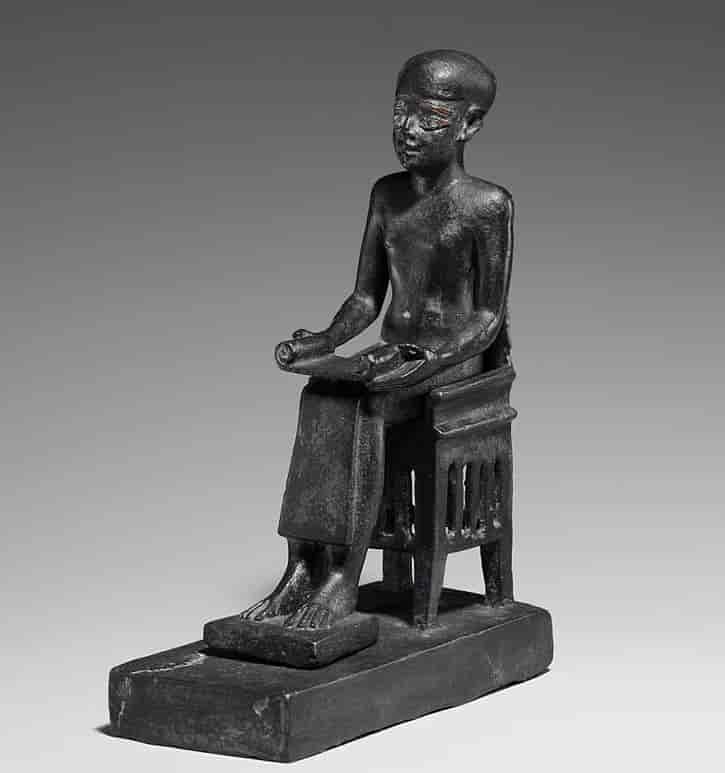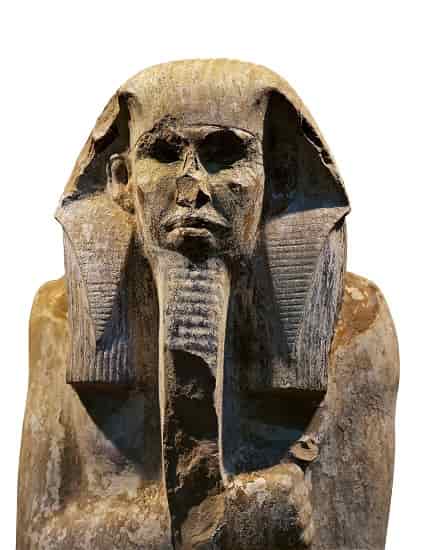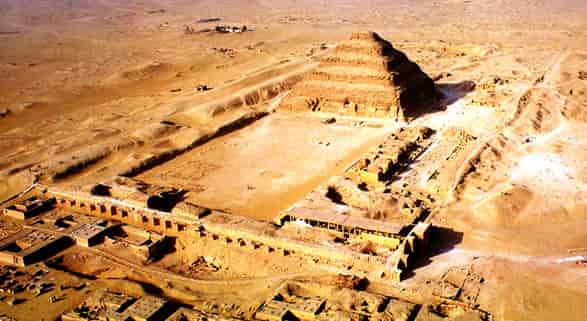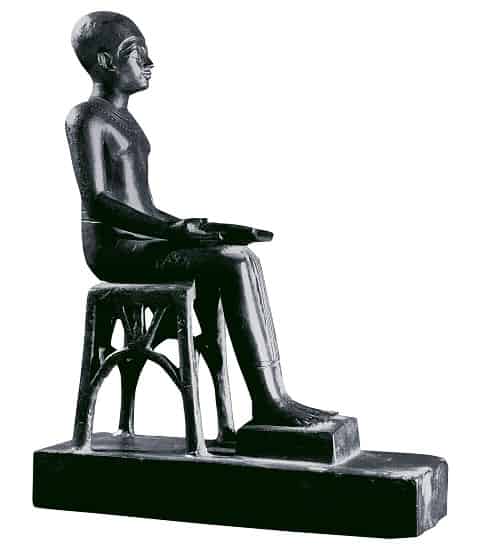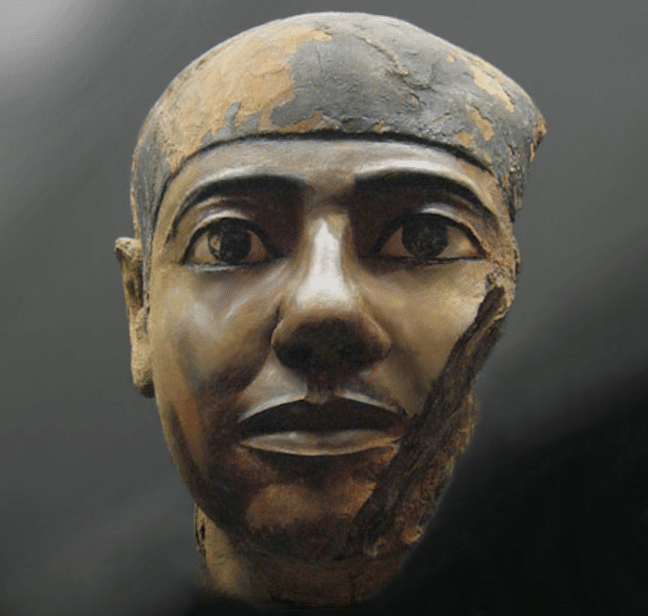Who was Imhotep?
Imhotep stands as one of the most significant non-royal figures in ancient Egyptian history. Of uncertain origin, Imhotep forged a distinguished career in state administration as a vizier and in monumental architecture during Pharaoh Djoser’s rule (2667 – 2648), a part of the Third Dynasty (2686 – 2613 BC) within the Old Kingdom period (2686-2125 BC).
Imhotep’s merit lies not only in being the designer of Egypt’s first pyramid, marking him as the first known architect in history, but also in being the first documented non-royal figure of his time.
This fact is substantiated by only two references to him found in archaeological discoveries from his era: an inscription on the base of a statue of Pharaoh Djoser, placed in the king’s funerary complex within the royal necropolis of Saqqara, and a graffiti on the wall of the pyramid enclosure of his successor, Pharaoh Sekhemkhet (2648 – 2640 BC).
The initial inscription unveils Imhotep’s official titles: “royal chancellor of Lower Egypt, First after the King, administrator of the Great Palace, nobleman, high priest of Ra, master of stone builders, sculptors, and makers of stone vessels.”
Moreover, it serves as undeniable proof of Pharaoh Djoser’s high regard for him, signifying that through that text, Imhotep would accompany the Pharaoh on his eternal journey through the Hereafter.
Conversely, the second discovery leads us to infer that Imhotep passed away sometime during the reign of Sekhemkhet.
Following his demise, Imhotep was likely interred at Saqqara, possibly within a large mastaba situated on the edge of the desert plateau, exhibiting the same orientation as Djoser’s pyramid. Nevertheless, despite the concerted efforts of archaeologists, his tomb’s location remains elusive.
The Origins of Imhotep
There are more uncertainties than certainties surrounding Imhotep’s origins. It is likely that he was born sometime in the late Second Dynasty (2890 – 2686 BC), into a family of either humble or noble origin, potentially explaining his remarkable ascent within the pharaoh’s court.
Regarding his family background, sources suggest he was the son of an unknown individual named Kanofer and a more well-known figure named Khereduankh. Additionally, records indicate his marriage to Ronpenofret.
It’s plausible that characters like Ronpenofret might be later inventions, possibly created to complete Imhotep’s revered family once he attained the status of a deity.
Imhotep likely completed his training and commenced his court duties during the reign of Pharaoh Nebka (2686 – 2667 BC), who preceded Djoser on the throne. This early start allowed him to gain recognition by the time Djoser assumed power.
Initially, he might have served as a craftsman, specializing in crafting stone vases and overseeing carpentry. His responsibilities would have included supervising technical teams and managing the transportation of products destined for the royal palace.
As Imhotep’s talents caught the pharaoh’s attention, he ascended to the position of high priest of Ra in Heliopolis, the primary center of worship dedicated to the Sun god.
Imhotep, The Carpenter Who Became a God
The grand scale of his enduring monumental work ensured that Imhotep’s legacy not only persisted but also magnified and became increasingly mythologized over time.
By the First Intermediate Period (2160 – 2055 BC), Imhotep transformed into a demigod, revered as the prolific creator of countless marvels across various domains such as writing, medicine, magic, and astronomy. References to him appear in preserved literary texts like the initial tale in the Westcar Papyrus and the poetic composition known as the Song of the Harpist, etched on the wall of a 17th Dynasty king’s tomb (c. 1580 – 1550 BC).
Moreover, during the waning days of the New Kingdom (1550 – 1069 BC), a divine cult dedicated to Imhotep emerged, associating him with the gods Thoth and Ptah.
From the 18th Dynasty (1550 – 1295 BC) onward, Imhotep was venerated as the patron of scribes. As the Late Period (664 – 332 BC) unfolded, he ascended to the status of the god of writing, architecture, wisdom, and medicine.
It’s intriguing to note that, during the New Kingdom, Imhotep was revered as a miraculous healer, despite no concrete evidence suggesting he practiced medicine during his lifetime.
Tradition attributes the authorship of the Edwin Smith Papyrus, the world’s oldest medical papyrus, to Imhotep. However, over time, Saqqara evolved into a significant center of worship for Imhotep, drawing crowds of pilgrims seeking healing from the deity.
During the Twenty-sixth Dynasty (664 – 525 BC), small bronze figurines depicting various divinities, including Imhotep, gained popularity. Over 400 of these statuettes exist, sharing a similar formal appearance: a youthful figure seated on a chair, bare-chested, clad in a kilt, and adorned with headgear akin to that of his divine father, Ptah.
